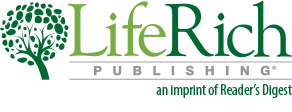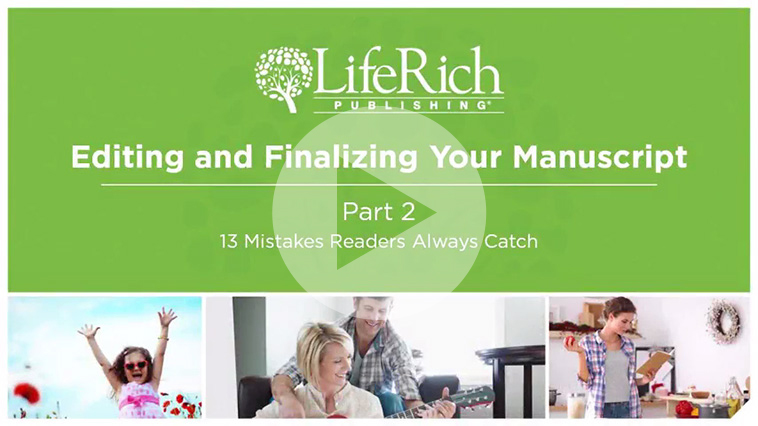Module 4: Editing
Editing and Finalizing Your Manuscript, Part One: Different Types of Editing
Andrea Levitt, a senior editor from Reader's Digest Select Editions, kicks off the first part of this video on the process of finalizing your manuscript. George Nedeff, a learning instructor at Author Solutions, guides the presentation from the value of hiring an editor to the types of services professional editors can offer aspiring authors.
Video Transcript
Hi, I'm Andrea, from Reader's Digest Select Editions. Welcome to the webinar, "Editing and Finalizing Your Manuscript." This webinar will consist of five parts. In this first part, we'll talk about the value of editing. As an editor, I obviously think that editing is important, whether you plan to self-publish or work with a traditional publisher. Good editors are here to make your work better. In this part, we'll also talk about different types of editing and what each consists of. Keep in mind that even though we'll talk about several different types of editing, it doesn't necessarily mean you'll work with several different editors. Many times, an editor will be able to combine different types of editing in the same review.
In part two, we'll talk about the 13 things that aggravate readers and are easy to miss while writing. Part three will cover how to select the right editor. We'll also talk about areas to look for in maintaining consistency in your book and the importance of indexing for nonfiction books. Next in part four, we'll talk about the do's and don'ts for writing an effective title. We will finish with common roadblocks that many writers face in completing their manuscript. So let's get started with part one.
Hi, this is George Nedeff. I'm the learning instructor at Author Solutions, as well as a former editor from the traditional industry. Editing certainly has value. Whether you plan to self-publish or traditionally publish, it's essential that your book is edited before it's published. While your publishing path directly affects the editing process, what it really boils down to is this: Regardless of your publishing path, editing is a must.
So why does a book need to be edited? It's a matter of perspective. As the writer of your work, you already know the plot and the details about each character or the facts that support your argument. It's extremely difficult for you to identify plot holes, unclear paragraphs or weaknesses in your work. You really need an editor to provide an outside and professional perspective on your book. You know another reason why a book should be edited? It's because typos and errors in grammar destroy a book's credibility. You will never have the chance to impress readers with your story if spelling and grammar errors cause the reader to put your book down. You may not be a grammatical genius, but you don't have to be. An editor is trained to catch and correct these kinds of errors before they wreak havoc on your prose.
One reason to edit, that is often overlooked, is to land an agent and a publishing contract. I mean, a misconception of first-time authors is to forego editing if they plan to traditionally publish, because the publisher's going to edit it for them. But that's a mistake. Before you do that, you must first impress an agent enough that he or she agrees to represent you. Don't rush to get an agent before your manuscript has been properly edited. It's true that your book will be edited by the publisher once it's picked up, however, you may never get the chance unless your manuscript undergoes some editing upfront. Likewise, if you plan to self-publish your book, your book needs to be professional quality in order to sell. The editing process is a necessary step to create a book that people want to read and bookstores want to stock.
When you're pursuing your own editor, you need to make sure that their definition of editing is in alignment with yours, and there are several types of editing out there. Copy editing or line editing, then there's mechanical editing, substantive editing and full-fledged developmental editing, which is more like a writing coach rather than someone who's fixing your spelling errors. These terms in editing can be confusing to, not only new authors, but the entire industry uses these terms interchangeably, and some folks view this type of editing as a line edit and another publisher will consider it copy editing. When you're hiring an editor, always speak to the editor prior to investing, so you know what their editing service includes to make sure it meets your needs. So let's go through, in more detail, what each type of editing provides.
So the most common, simplest form of editing is copy editing, also commonly known as line editing. It's a light form of editing that applies a professional polish to a book. The editor reviews your work, fixing any mechanical errors in spelling, grammar, punctuation. Depending on the definition, copy editing may also include editing of syntax, word choice, tightening of sentences and the application of style, such as the Chicago Manual of Style. The application of style is called mechanical editing. Copy editing is the least expensive version of editing. Every book should be copy edited. Some professionals divide copy editing and line editing into two separate edits: copy editing being the lighter, grammar-only edit and line editing being a more intense look at each sentence's meaning. Always clarify with your editor what is included in his or her copy edit just to be sure.
Next, we have mechanical editing. Mechanical editing refers to the application of a particular style, such as the Chicago Manual of Style or Associated Press (AP) Style. The editor looks at punctuation, capitalization, spelling, abbreviations and any other style rules. For instance, in the Chicago Manual of Style, a comma is placed after the last word in a series. He ate a lettuce comma ham comma and cheese sandwich. In the AP Style, the last comma is omitted. He ate a lettuce comma ham and cheese sandwich. Mechanical editing is sometimes included in copy editing.
Substantive editing considers a work's organization and presentation. It involves tightening and clarifying in a chapter, scene, paragraph and sentence level. Unlike developmental editing, which covers the big picture issues and deep level restructuring, substantive editing deals with the actual prose. It's sometimes referred to as a line edit. It also can be confused with developmental editing. Always check with your editor, and put in writing what his or her service covers regardless of the term used.
A developmental editor looks deeply at the organization and strength of a book. Think big picture. The editor considers everything from pacing, the characters, point of view, tense, plot, subplots and dialogue. Weak links are exposed and questioned. The editor scrutinizes order, flow and consistency. He asks questions such as: "Is this the right number of chapters? Are the chapters and paragraphs in the right order? Are there any places in the book where the pacing lags? Is there a hole in the information or story presented? Are the characters likable?" Development editing considers all of the aspects of a manuscript that make the book readable and enjoyable. The editor strives to make the book as strong as it can be, regardless of the scale of changes required. He strengthens the author's voice and clarifies it. Developmental editing can call for the far-reaching reorganization of material. Because of the extensive nature of this form of editing, it is more time-intensive and costly. However, it's worth the investment if you are serious about succeeding as an author.
That concludes part one of "Editing and Finalizing Your Manuscript." In part two, we'll look at the 13 common mistakes that readers always catch. For information about publishing, go to LifeRichPublishing.com for a free publishing guide and a free consultation.


